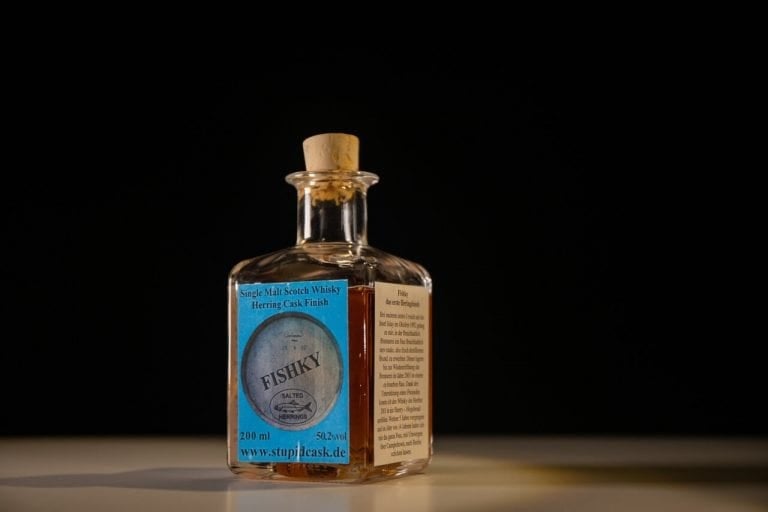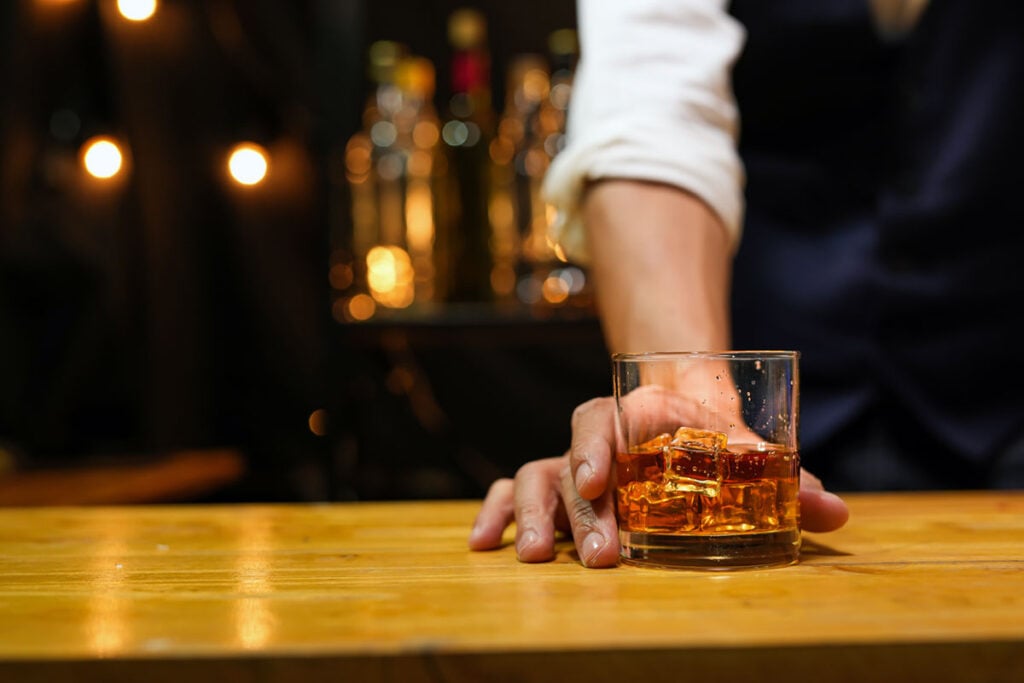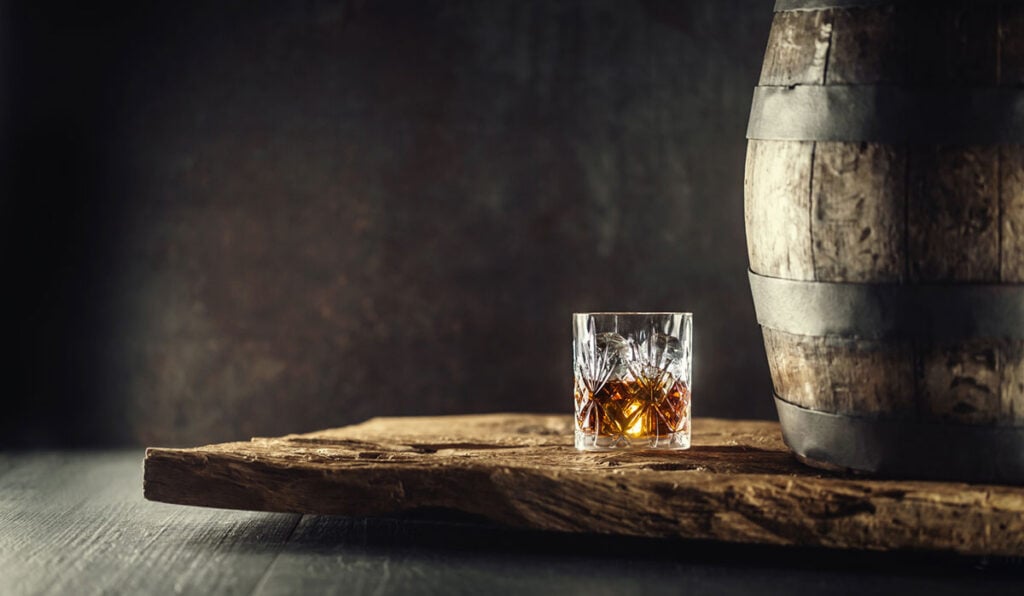“There is no bad whisky. There are only some whiskies that aren’t as good as others.”
— Raymond Chandler
Was Chandler onto something? Gum is perfection. Wait, wrong Chandler.
Whisky inspires fierce personal opinions. One person’s “undrinkable” could be another’s desert island dram. Some wouldn’t drink peated whisky if you paid them, others only drink it.
But that doesn’t make it a bad whisky.
So what makes a whisky awful? More to the point, is there such a thing as a bad whisky at all? Perhaps it’s all just taste…

Is there any bad whisky anymore, or just whisky we don’t like?
What constitutes a bad whisky?
The trouble is, “bad” is a slippery word. In whisky, it’s often more about expectation versus experience than some objective flaw in the spirit. Then you have the ol’ “taste is subjective” chestnut.
Ask the average whisky drinker to name a terrible dram they had, and it will tend to fall into these categories:
Bland, boring whisky
Every whisky lover has encountered a bottle that inspires all the excitement of a rice cake. But is that just a profile that doesn’t happen to set your palate dancing? What some call dull, others might call subtle. On the other side of this scale are expressions with extreme profiles (too much smoke or cask influence, etc.), but all roads lead back to preference.
Blends, grain whisky… tired old clichés
Once upon a time, people dismissed blends and grain whisky as cheap filler. Today, those assumptions don’t hold water — or should that be whisky? There are blends with dazzling complexity and grain whiskies that can age into astonishingly rich drams. Dismissing them out of hand means missing out.
Bad faith, dishonest creations
This is where “bad” starts to have teeth. Whisky made with more regard for spreadsheets than spirit. Corners cut, quality compromised, transparency non-existent. When liquid is built purely for volume and margin, rather than flavour and craft. We’re into a realm of “bad faith” whisky here. Even if the taste isn’t actively offensive, the intention behind it leaves something to be desired.
Swings and misses
Experimental casks, odd flavour infusions, marketing-driven gimmicks… now and then, distilleries take risks that simply don’t pay off. Sometimes these become cult curiosities; sometimes they quietly vanish into clearance bins. Bad? Well, people flock to see The Room in droves.
The worst whiskies ever made
Whisky lovers occasionally compile “worst ever” lists, and they make for fascinating (and occasionally horrifying) reading. Many of the offenders aren’t so much vile as wildly mismatched to their audience.
Take Fishky. Originally a Bruichladdich single cask, it was finished in a herring barrel. A barrel that previously had fish. Hence the name. Tasting notes range from “rotten vegetables” to “acid reflux”. It’s become something of a curiosity collectable in recent years.
Other contenders include Elvis Midnight Snack, a banana bomb masquerading as whisky, likened by one critic to “medicine, iodine and sadness” (an excellent name for an Islay metal band). Then there’s Japanese single malt Usuikyou, which veteran forum users call one of the most aggressively horrible whiskies they’ve tasted, with descriptors like “chemical, vinyl, burning garbage” and “a finish that is unmercifully long”.
The common thread? Many of these fit into the “swings and misses” camp. They’re not contemptuous, just comedically bad. Outliers that don’t represent their style, country, or whisky as a whole.

The infamous Fishky. Image credit: Malt Review
A golden age of whisky production?
Which brings us to the crux of this article: whisky-making has never been better. Our understanding of oak, maturation, flavour chemistry, and sensory perception has leapt forward.
Distilling science is sharper, knowledge is shared wider and faster than ever before, and there’s an entire world of information for the consumer to eat up.
That last point is so important because it is YOU who has power. More than you’d think. It’s not so easy now for corporations to pull the wool over the eyes of discerning drinkers. Try that, and every forum, blog, and social media platform will eat you alive.

What’s the worst whisky you’ve ever had?
Still so much to learn
That doesn’t mean we know everything. Or that knowing everything is even possible. The most experienced master distiller learns something new every day. The most impressive writers are surprised all the time. There is still so much more to learn.
Why is it exactly that if you replicated a distillery a mile away, the spirit would differ? What specific quirks of climate, water, and microflora are at play? The individuality and complexity of the water of life keep drawing us all back, probing and demanding and delighting us.
But we have still yanked the baseline quality up and up over the years. I can’t think of a single distiller, blender or bottler I’ve met who doesn’t think the same. If you are someone who has the opposite opinion, by the way, please do comment.
My two cents is that true “bad” whisky is mostly a thing of the past. Genuine swill that flooded the market in Prohibition or before strict legislation governed production and trading standards simply doesn’t get made anymore. The best malts might have been created in the past, I wouldn’t know. But the standard of the average spirit is at its peak.

Andrew Lennie from Whyte & Mackay
Some expert opinions
That’s the theory, anyway. Let’s put it to some experts, who also contributed to another think piece on age statements yesterday. Yes, they all received the same email. I’m a very busy man.
Here are some top voices from the whisky world:
Andrew Lennie, global single malt whisky specialist at Whyte & Mackay:
“Whisky is incredibly diverse, and personal taste plays a huge role. What one person finds undrinkable, another might love. That diversity is what makes whisky so interesting. Sure, there are whiskies I’ve tried that I didn’t enjoy – even some I might describe as “bad.” But maybe that just means they weren’t for me. If everyone agreed on flavour, we wouldn’t have such a rich and varied whisky landscape to explore.”
Matt McKay, managing director & whisky maker at The London Distillery Company and creator of The Dramble:
“There are absolutely bad whiskies – but in reality, these are few and far between, often quite hard to find and requiring hunting down to experience. In all other cases, to my mind, people are conflating “bad’ with ‘boring’, or indeed with flavours and profiles which sit outside of personal preferences.”
“However, there are examples out there, where the production methods employed have been fundamentally flawed and therefore the resulting spirit is frankly unpleasant…sometimes amusingly so, assuming you have an inclination of what you’re getting yourself into beforehand. Nevertheless, seeking out and tasting bad whisky is a useful experience as it will provide a solid baseline by which to judge everything else – and thus the realisation that the vast majority of whisky is, relatively speaking, exceptionally well made”.
Georgie Bell, co-founder and CEO of The Heart Cut:
“If the whisky has been signed off by the distiller/owner and bottled, then that’s their seal of approval and they are bottling what they want to showcase to the world”.
“If I don’t like it, then it’s not to my preference. That doesn’t make it bad. And often, when this happens, I need to rethink about what the whisky is – why it might taste the way it does – what story of grain/provenance/passion/style is the company trying to tell through the bottle – and also whether I’m in the mood for a whisky like that”.

The quality of our beloved spirit may never have been higher
The death of bad whisky?
The tl;dr is this: Truly bad whisky has existed, but it’s increasingly rare, often accidental, and even redeemingly collectable through its off-kilter charm.
Today’s baseline quality is higher than ever. Our worst drams are far more likely to be forgettable than traumatic.
